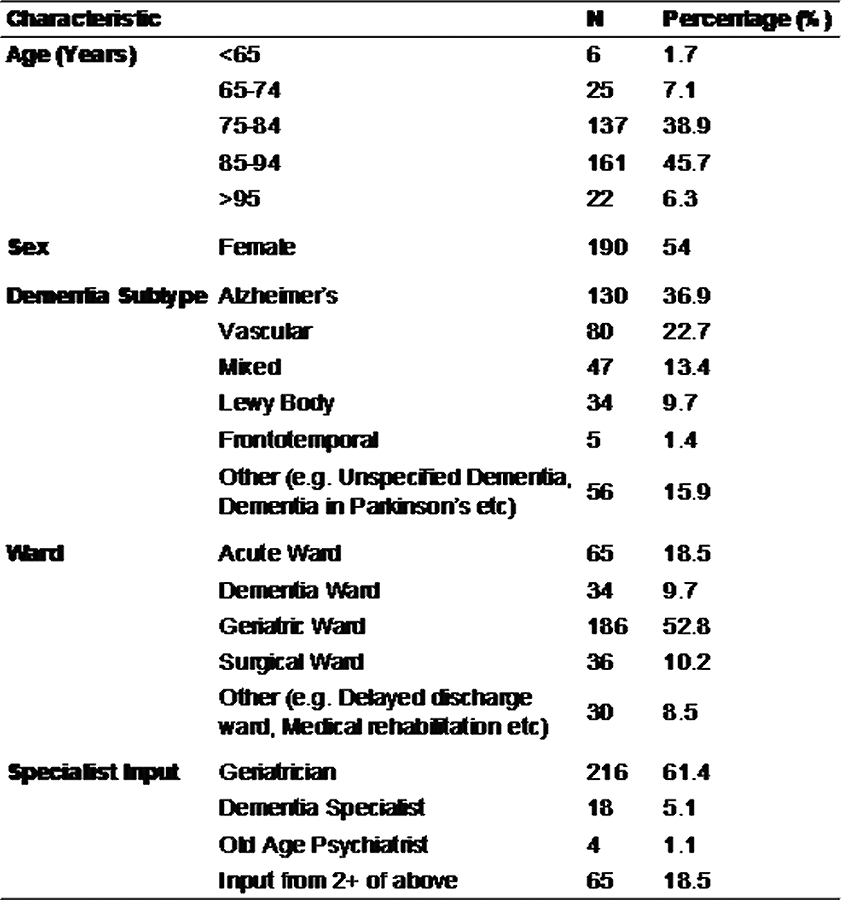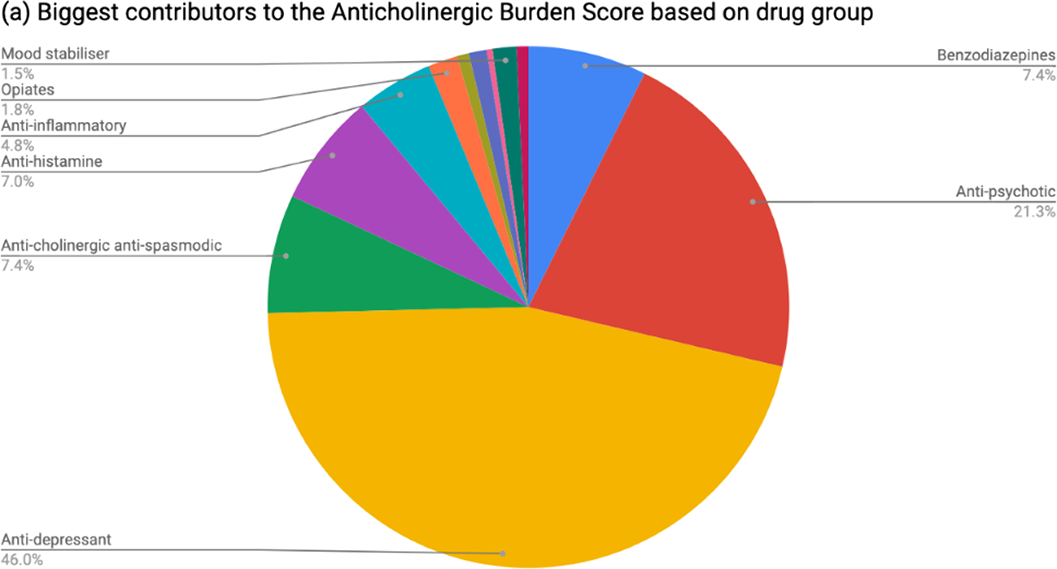237 results
Neurophysiological evidence of motor preparation dysfunction to inner speech in schizophrenia
-
- Journal:
- European Psychiatry / Volume 67 / Issue S1 / April 2024
- Published online by Cambridge University Press:
- 27 August 2024, p. S243
-
- Article
-
- You have access
- Open access
- Export citation
Impact of COVID-19 restriction on weight, physical activity, diet and psychological distress on people with polycystic ovary syndrome
-
- Journal:
- Proceedings of the Nutrition Society / Volume 83 / Issue OCE1 / April 2024
- Published online by Cambridge University Press:
- 07 May 2024, E82
-
- Article
-
- You have access
- Export citation
The role of interoception in the mechanism of pain and fatigue in fibromyalgia and myalgic encephalomyelitis/chronic fatigue syndrome (ME/CFS)
-
- Journal:
- European Psychiatry / Volume 64 / Issue S1 / April 2021
- Published online by Cambridge University Press:
- 13 August 2021, p. S139
-
- Article
-
- You have access
- Open access
- Export citation
Dementia patients have greater anti-cholinergic drug burden on discharge from hospital: A multicentre cross-sectional study
-
- Journal:
- European Psychiatry / Volume 64 / Issue S1 / April 2021
- Published online by Cambridge University Press:
- 13 August 2021, pp. S422-S423
-
- Article
-
- You have access
- Open access
- Export citation
Management of ENT emergencies during the coronavirus disease 2019 pandemic
- Part of
-
- Journal:
- The Journal of Laryngology & Otology / Volume 135 / Issue 2 / February 2021
- Published online by Cambridge University Press:
- 22 February 2021, pp. 117-124
- Print publication:
- February 2021
-
- Article
- Export citation
P091: Essential elements to implementing the paramedics providing palliative care at home program: an application of the Consolidated Framework for Implementation Research (CFIR)
-
- Journal:
- Canadian Journal of Emergency Medicine / Volume 22 / Issue S1 / May 2020
- Published online by Cambridge University Press:
- 13 May 2020, p. S97
- Print publication:
- May 2020
-
- Article
-
- You have access
- Export citation
P0305 - Frequency of psychosis-like symptoms in a non-clinical population of 12 year olds: Results from the Alspac birth cohort
-
- Journal:
- European Psychiatry / Volume 23 / Issue S2 / April 2008
- Published online by Cambridge University Press:
- 16 April 2020, p. S282
-
- Article
-
- You have access
- Export citation
Assessing the risk of venous thromboembolism in psychiatric in-patients
-
- Journal:
- European Psychiatry / Volume 41 / Issue S1 / April 2017
- Published online by Cambridge University Press:
- 23 March 2020, p. S686
-
- Article
-
- You have access
- Export citation
Consensus Statements On Cognitive Dysfunction In Depression In The Uk: Rationale And Process For Gaining Consensus
-
- Journal:
- European Psychiatry / Volume 33 / Issue S1 / March 2016
- Published online by Cambridge University Press:
- 23 March 2020, p. S424
-
- Article
-
- You have access
- Export citation
The use of Polygenic Risk Scores to Inform Aetiology of Mood and Psychotic Disorders
-
- Journal:
- European Psychiatry / Volume 41 / Issue S1 / April 2017
- Published online by Cambridge University Press:
- 23 March 2020, p. S166
-
- Article
-
- You have access
- Export citation
Chapter Two - Analytical approaches for microbiome research
-
-
- Book:
- Microbiomes of Soils, Plants and Animals
- Published online:
- 07 March 2020
- Print publication:
- 12 March 2020, pp 8-28
-
- Chapter
- Export citation
Fundamental physics with the Square Kilometre Array
- Part of
-
- Journal:
- Publications of the Astronomical Society of Australia / Volume 37 / 2020
- Published online by Cambridge University Press:
- 27 January 2020, e002
-
- Article
-
- You have access
- HTML
- Export citation
Post-jökulhlaup geomorphic evolution of the Gígjökull Basin, Iceland
-
- Journal:
- Annals of Glaciology / Volume 60 / Issue 80 / December 2019
- Published online by Cambridge University Press:
- 10 October 2019, pp. 127-137
-
- Article
-
- You have access
- Open access
- HTML
- Export citation
Equivalency of the diagnostic accuracy of the PHQ-8 and PHQ-9: a systematic review and individual participant data meta-analysis – ERRATUM
-
- Journal:
- Psychological Medicine / Volume 50 / Issue 16 / December 2020
- Published online by Cambridge University Press:
- 19 August 2019, p. 2816
-
- Article
-
- You have access
- HTML
- Export citation
Equivalency of the diagnostic accuracy of the PHQ-8 and PHQ-9: a systematic review and individual participant data meta-analysis
-
- Journal:
- Psychological Medicine / Volume 50 / Issue 8 / June 2020
- Published online by Cambridge University Press:
- 12 July 2019, pp. 1368-1380
-
- Article
- Export citation
To investigate the effect of grass-based feeding practices on insulin sensitivity, adipose tissue inflammation and hepatic lipid composition in a transgenic mouse model
-
- Journal:
- Proceedings of the Nutrition Society / Volume 78 / Issue OCE1 / 2019
- Published online by Cambridge University Press:
- 07 March 2019, E15
-
- Article
-
- You have access
- HTML
- Export citation
Establishing the impact of powerful AGN on their host galaxies
-
- Journal:
- Proceedings of the International Astronomical Union / Volume 15 / Issue S359 / March 2019
- Published online by Cambridge University Press:
- 29 March 2021, pp. 203-211
- Print publication:
- March 2019
-
- Article
-
- You have access
- Export citation
Simulation of Legionnaires’ disease prospective spatiotemporal cluster detection, Allegheny County, Pennsylvania, USA
-
- Journal:
- Epidemiology & Infection / Volume 147 / 2019
- Published online by Cambridge University Press:
- 18 October 2018, e29
-
- Article
-
- You have access
- Open access
- HTML
- Export citation
Smectite-polymer interactions in aqueous systems
-
- Journal:
- Clay Minerals / Volume 18 / Issue 4 / December 1983
- Published online by Cambridge University Press:
- 09 July 2018, pp. 373-397
-
- Article
- Export citation
Electro-fluorescence studies of the binding of fluorescent dyes to sepiolite
-
- Journal:
- Clay Minerals / Volume 31 / Issue 1 / March 1996
- Published online by Cambridge University Press:
- 09 July 2018, pp. 81-94
-
- Article
- Export citation



